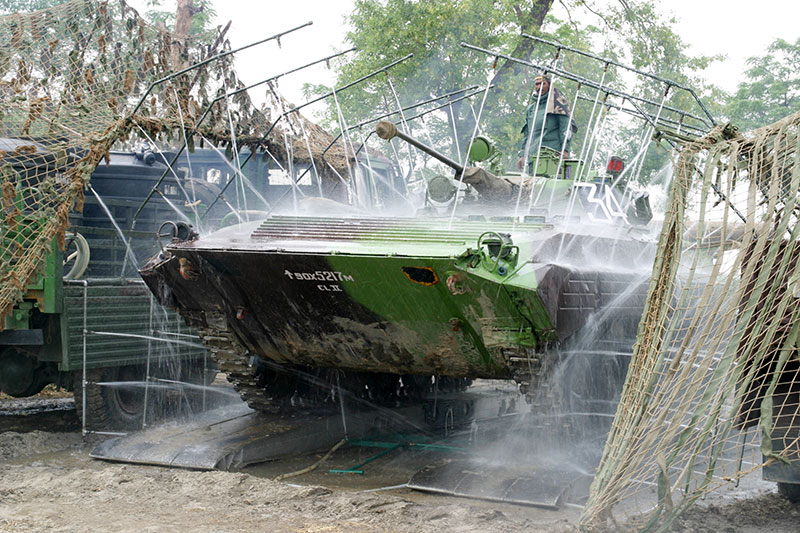Guest Column | Pressure Tactics
 Lt Gen. B.S. Nagal (retd)
Lt Gen. B.S. Nagal (retd)
The Cold War saw the deployment of thousands of Tactical Nuclear Weapons (TNWs) for use in the battlefield, concepts and operational doctrines of North Atlantic Treaty Organisation (NATO) and Warsaw Pact were developed, debated, practiced, refined and trained for that unforeseen eventuality of a war in Europe. The debate whether a nuclear war could be fought and won never arrived at a definite conclusion but studies predicted large scale destruction of men and material besides the environmental damage, and a global winter.
However, it was accepted wisdom that preparation must be made in order not to found wanting if the need ever arose in the eventuality of a war in Europe. The capability development served the fundamental tenet of deterrence, i.e. to convey intent and credibility and signalling. India now faces a similar challenge from Pakistan, and must be prepared to fight in nuclear conditions if the need ever arises.
At the 2015 Carnegie International Nuclear Policy Conference on 23-24 March 2015, the former Director General of the Strategic Plans Division (SPD) and then adviser to the National Command Authority of Pakistan justified the development of TNWs by the country stating that Pakistan seeks deterrence across the entire spectrum of conflict, i.e. at the strategic, operational and tactical levels.

Tanks being washed off for biological protection during Exercise Sanghe Shakti
The Inter-Services Public Relations (ISPR) of Pakistan issued a press release proclaiming Full Spectrum Deterrence; Pakistan seeks deterrence across the entire spectrum of conflict, i.e. at the strategic, operational and tactical levels. (ISPR Release No PR-280/2015-ISPR Dated: 9 September 2015). In October 2015 the Foreign Secretary of Pakistan justified the development of TNWs by the country [suggesting, the army], which interestingly is the mandate normally taken by the SPD or the political establishment. The statements by various political and military leaders on potential use of nuclear weapons against India, either direct, or couched, has been part of Pakistan’s narrative for nearly two decades. Academic and defence analysts from Pakistan and some other countries hold responsible, or attribute TNWs, primarily to India’s ‘Cold Start Doctrine’, thereby implying that this is the only rationale for development of Pakistan’s TNWs. This leads to the fundamental summation, that of Pakistan believing that it can, in effect, deter India and, if required, control nuclear exchanges after the TNWs have been detonated in the battlefield.
In spite of making pronouncements of full spectrum deterrence, Pakistan has not released any nuclear doctrine, but made provocative statements indicating early use of nuclear weapons in a war with India, using/ threatening to use nuclear weapons for blackmail/coercion under certain conditions. Pakistan has made it clear that its nuclear arsenal is India centric. Pakistan has a nuclear policy of ‘First Use’ further substantiated by induction of TNWs, nuclear war-fighting, offensive deterrence linking conventional conflict with nuclear escalation, brinkmanship with calibrated instability of nuclear deterrence.
1
The nuclear thresholds are embedded in ambiguity, which serves the purpose of keeping the world focus on the sub-continent and declaring the region as unstable. Simultaneously Pakistan seeks to establish moral authority to use nuclear weapons against an inimical bigger power. The statements made after the initial tests of the short-range Nasr missile, beginning 2011, had reiterated the India-centric approach of Pakistan’s nuclear weapons and reasoned the requirement of TNWs to negate India’s ‘offensive approach’ to military actions against Pakistan. The development of TNWs is viewed by defence analysts and military thinkers as destabilising and making South Asia an unstable region.
more
Pakistan endeavours to persuade the world that if there is a war with India, it will have no choice but to oppose the Indian armed forces in Pakistan territory and will use TNWs to destroy/ decimate the offensive and force India to stop its offensive operations. It appears a very simplistic and naïve approach to escalation control in a nuclear environment.
The basic reason for Pakistan to fear a war is the policy of a 1,000 cuts i.e. Op Tupac, it has orchestrated and launched against India i.e. ‘proxy war through terror’ and continues to strategise and control. It understands that this policy is flawed but still pursues it to keep India embroiled in internal strife, and appreciates it may spiral out of control, hence fore warns India of the intention of use of TNWs and expects New Delhi to take no reasonable counter action fearing that it can lead to war and a nuclear escalation.
It is important to emphasise that the Pakistan Army, despite grave consequences including that of destruction of the country will deploy and even propagate use of TNWs to protect/ bolster its image. This assessment is derived from historical records and psyche of the Pakistan Army, which ultimately will determine the use of these weapons rather than the political leadership of Pakistan. Historical experience demonstrates that the Pakistan Army will protect its schema and not t
Subscribe To Force
Fuel Fearless Journalism with Your Yearly Subscription
SUBSCRIBE NOW
We don’t tell you how to do your job…
But we put the environment in which you do your job in perspective, so that when you step out you do so with the complete picture.







